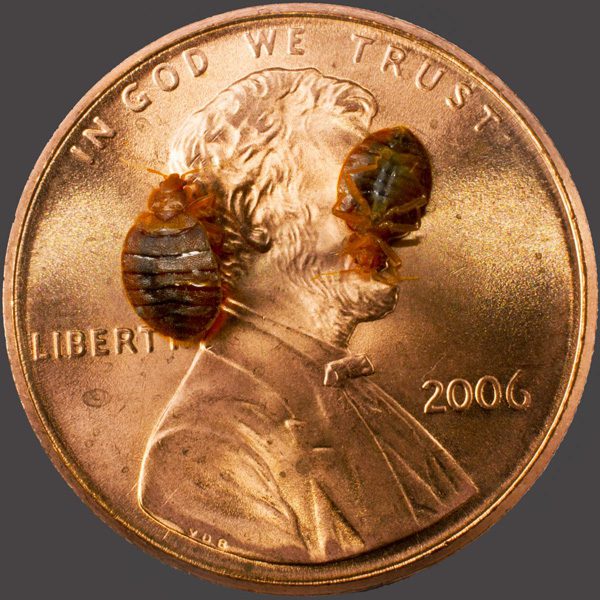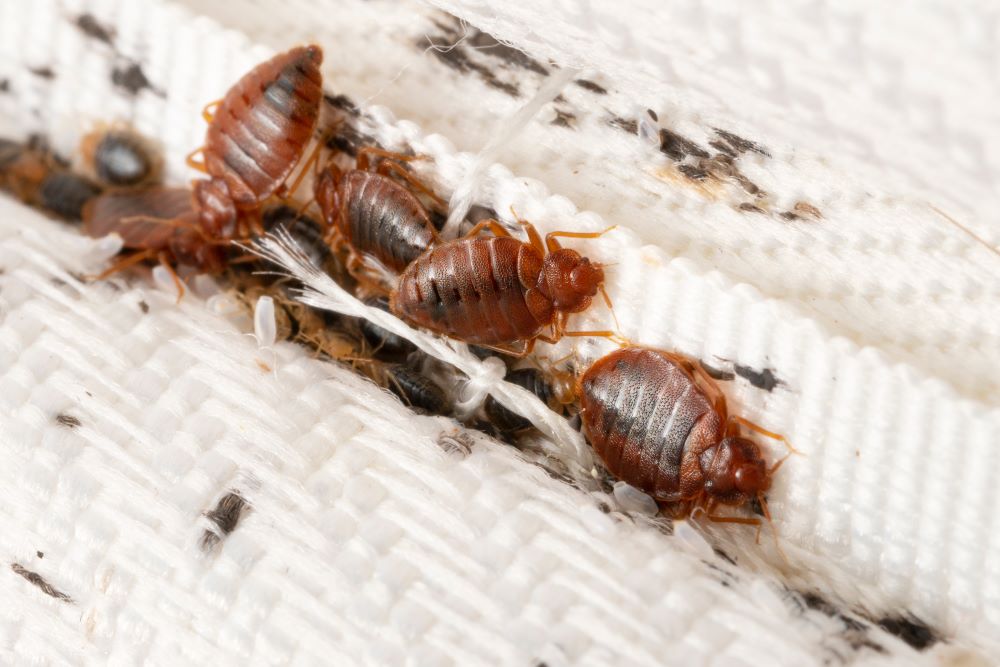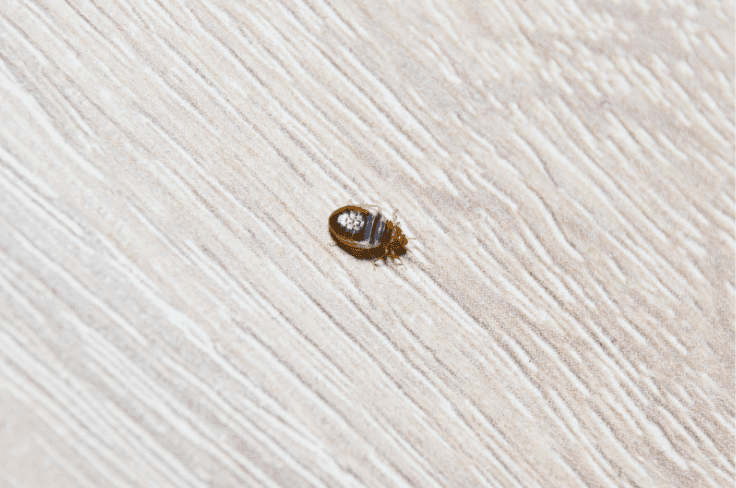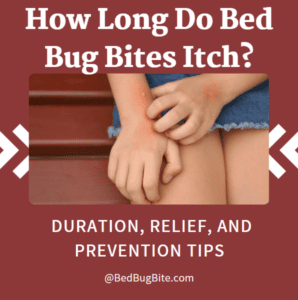When it comes to unwelcome guests, bed bugs top the list. These minuscule, nocturnal invaders can transform peaceful slumber into restless nights and leave you with irksome, itchy bites. A myth that often circulates about these bugs is their ability to fly, leaving many anxious homeowners in fear. In our comprehensive guide, we take this question head-on – Do bed bugs fly? But before we delve into the answers, let’s understand more about these elusive creatures and why their mobility matters to us.
Bed bugs, known scientifically as Cimex lectularius, are tiny insects that thrive in the corners and crevices of our homes, particularly around sleeping areas. They are infamous for their blood-sucking habits, feeding predominantly during the night when their human hosts are asleep. Misconceptions about these pests, like their alleged flight, can lead to misguided attempts at eradication and prevention. In this post, we aim to offer accurate, detailed, and reliable information about bed bugs, their mobility, and effective strategies to keep them at bay.
With bed bugs’ persistence and the havoc they wreak, it’s vital to stay informed. So, whether you’re battling an ongoing infestation or are proactive about preventing one, our in-depth guide provides you with insights and solutions that are backed by science and expert knowledge. Remember, when it comes to bed bugs, knowledge is your best defense.
Stay tuned as we unravel the truth about bed bug mobility and provide practical advice to help maintain a comfortable, bug-free living environment. Together, let’s demystify the world of bed bugs and debunk the misconceptions that surround them. Let’s dive in!
Understanding Bed Bugs:

The first step to fighting any adversary is understanding them. When it comes to bed bugs, the principle holds true. Bed bugs are tiny, flat, oval-shaped insects that are reddish-brown in color and usually about the size of an apple seed. Although they might appear innocuous, these pests are infamous for the distress they cause with their nocturnal feeding habits.
A common misconception about bed bugs is that they’re only found in unclean or cluttered environments. This, however, couldn’t be further from the truth. Bed bugs are opportunistic pests that can infest any place, given the right conditions. They’re just as likely to be found in a sparkling clean apartment as they are in a dirty one, if there’s a host to feed on.
Another widespread myth is that bed bugs transmit diseases. Thankfully, according to the Centers for Disease Control and Prevention, bed bugs do not spread diseases. However, their bites can lead to skin irritation, allergic reactions, and severe distress.
Source: CDC – Bed Bugs – Frequently Asked Questions (FAQs)
Bed bugs are also commonly mistaken to be nocturnal creatures. While it’s true that they’re most active during the night, bed bugs can adapt their feeding schedule to match their host’s sleeping patterns. Hence, they’re not strictly nocturnal and can be just as bothersome during the day.
As we dispel these misconceptions, our understanding of bed bugs becomes clearer. In the following sections, we’ll address the burning question on everyone’s mind: Do bed bugs fly? Stay with us as we delve deeper into the fascinating, albeit frustrating, world of bed bugs and their mobility.
Do Bed Bugs Fly?
As we get into the core of our discussion, we aim to address the looming question: Do bed bugs fly? The answer, quite simply, is no. Bed bugs, despite the common myth, do not possess the ability to fly. Unlike some other household pests such as flies or mosquitoes, bed bugs lack wings and cannot take to the air. This revelation might come as a surprise, given the rapid rate at which they seem to spread and infest our homes.
When we compare bed bugs with other insects that can fly, their limitations in mobility become more apparent. Flying insects typically have wings and a body structure conducive to air travel. On the contrary, bed bugs have a flat, oval shape and lack any form of wing structure.
However, this lack of flight does not make them any less of a nuisance. Bed bugs are cunning creatures, adapting their movements in other ways to ensure they find a host to feed on. The absence of flight certainly doesn’t slow their spread, as they have their unique tactics to move from one place to another, which we will explore in the next section.
So, there you have it – the myth has been debunked. Bed bugs do not fly. But their inability to fly doesn’t make them less formidable. As we continue, we’ll look at how these critters manage to get around so effectively, and what you can do to prevent them from turning your home into their next feast.
How Do Bed Bugs Move?
Having debunked the myth that bed bugs can fly, it’s essential to understand how they do move. Although they may not take to the skies, these pests are incredibly mobile, adept at getting around by crawling rapidly over surfaces, including walls, furniture, and yes, even beds.
Bed bugs’ impressive speed allows them to move quickly from one place to another. On average, an adult bed bug can cover up to a meter a minute on a flat surface. They use their six legs to navigate across various surfaces and textures efficiently.
Not just speedy crawlers, bed bugs are also skilled climbers. They can scale vertical surfaces and cross ceilings, a talent that lets them access a wide range of hiding spots and make a quick getaway when disturbed. However, their ability to walk on metal or smooth surfaces is limited due to a lack of grip.

Apart from their nimbleness, bed bugs utilize humans and animals for transportation – a phenomenon known as ‘hitchhiking.’ Latching onto luggage, clothing, or other personal items, they can travel long distances unnoticed, explaining how they manage to infest different rooms or even buildings rapidly.
Their keen sense of heat and carbon dioxide, which humans emit, guides them toward potential hosts, further enhancing their ability to infest new areas.
So, while bed bugs may not have wings, they more than compensate with their crawling speed, climbing skills, and ‘hitchhiking’ talents. As we move forward, we’ll discuss the implications of this mobility and how to strategize an effective defense against these ever-invasive pests. With the right knowledge and tactics, we can curtail their relentless invasion. Read on to discover more!
Implications of Bed Bug Mobility:
Now that we’ve established the crawling and ‘hitchhiking’ nature of bed bugs, let’s delve into the implications of their mobility. This comprehensive understanding is crucial, as it underlines the potential scale and severity of bed bug infestations.
Because of their ability to move rapidly, bed bugs can infest a large area in a surprisingly short time. A single female bed bug can lay up to 500 eggs in her lifetime, which can rapidly increase the population, leading to a full-blown infestation.
Their unique mobility contributes to the difficulty in controlling and preventing bed bug infestations. Since they can hide in a multitude of places – from mattress seams to electrical outlets – locating and eradicating all of them is a significant challenge. Plus, their ability to survive without a blood meal for several months allows them to outlast many elimination attempts.

Furthermore, their hitchhiking skills facilitate their spread to new locations. Even a single bug or egg unknowingly transported in luggage or clothing can lead to a new infestation, making them a common problem in hotels, apartments, and homes.
These implications underscore the necessity of a strategic, comprehensive approach to prevent and combat infestations. In the following section, we’ll equip you with effective strategies to keep these nuisances at bay. With knowledge as your arsenal, you can protect your living spaces from these stealthy invaders. Let’s get ready to reclaim our peace of mind!
Preventing Bed Bug Infestations:
Knowing the cunning nature of bed bugs, it’s evident that preventing an infestation is far better than having to deal with one. But how exactly do we keep these stealthy intruders at bay? Let’s arm ourselves with some practical, proven strategies for preventing bed bug infestations.
One of the most effective preventive measures is regular inspection. Check your home frequently, especially after trips, for signs of bed bugs. These signs may include tiny black spots (their fecal matter), shed skins, or the bugs themselves in mattress seams, behind wallpapers, or in furniture crevices.
Next, keep your home decluttered. Although cleanliness isn’t a deterrent for bed bugs, reducing clutter minimizes their hiding spots. Using mattress encasements can also limit their access to comfortable hiding and breeding areas.
When traveling, be cautious. Inspect hotel rooms for signs of bed bugs and keep your luggage off the floor to prevent these pests from hitching a ride home with you. Upon return, wash your clothes immediately and inspect your belongings.
Lastly, if you suspect an infestation, contact a professional pest control service. Their expertise and specialized equipment can ensure comprehensive elimination, minimizing the chance of a recurrence.
Remember, bed bugs are skilled hitchhikers and can infiltrate even the cleanest homes. But armed with the right preventive measures, we can protect our homes and families from these troublesome pests. Read on as we continue to debunk more myths and shed light on bed bug behaviors, helping you stay one step ahead in the battle against bed bugs.
Common Myths and Facts about Bed Bugs:
Our exploration of the bed bug world wouldn’t be complete without addressing some of the common myths and facts surrounding these infamous pests. With misinformation abundant, it’s crucial to separate fact from fiction to tackle bed bug infestations effectively.
Myth 1: Bed Bugs Can Fly. As we’ve established in our discussion, this is a myth. Bed bugs do not have wings and cannot fly. Instead, they crawl and ‘hitchhike’ on humans and their belongings to spread.
Myth 2: Bed Bugs Are Nocturnal. While bed bugs are most active at night, they are not strictly nocturnal. They can adjust their feeding patterns to match that of their host. Hence, they can also be active during the day, especially in heavily infested areas.
Myth 3: Bed Bugs Only Infest Dirty Places. This is another common misconception. Bed bugs are not attracted to dirt or grime but to warmth, carbon dioxide, and blood. They can infest any place, regardless of how clean it is.
Fact 1: Bed Bugs Can Survive Without a Meal for Months. Yes, these resilient pests can live for several months without feeding, which makes getting rid of them particularly challenging.
Fact 2: Bed Bugs Can Cause Health Problems. While they don’t transmit diseases, bed bug bites can lead to skin rashes, allergic symptoms, and even psychological effects due to lack of sleep and anxiety.
Fact 3: Professional Pest Control is the Most Effective Way to Eliminate Bed Bugs. DIY methods can sometimes help contain an infestation, but professional pest control services offer the most comprehensive and effective solution.
Understanding these myths and facts empowers us to respond to bed bug infestations more effectively. As we wrap up our comprehensive guide, we’ll recap the essential points, helping you keep these pesky invaders at bay.
In Summary,
In conclusion, understanding the mobility of bed bugs is crucial for their effective management and infestation prevention. Despite common misconceptions, bed bugs do not fly, relying instead on their nimble crawling and adept climbing abilities to spread. Their remarkable ability to hitch a ride on humans and animals further enhances their mobility, making infestations notoriously difficult to control. It is essential to dispel myths and arm ourselves with factual knowledge about bed bugs to devise effective prevention strategies and measures.
By adopting the right practices and seeking professional help, when necessary, we can curb the spread of these unwelcome houseguests and maintain a comfortable and bug-free living environment. Stay informed, stay vigilant, and remember – prevention is always better than cure when it comes to managing bed bugs.




